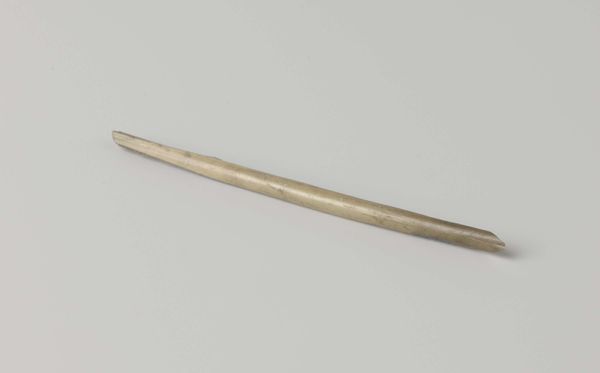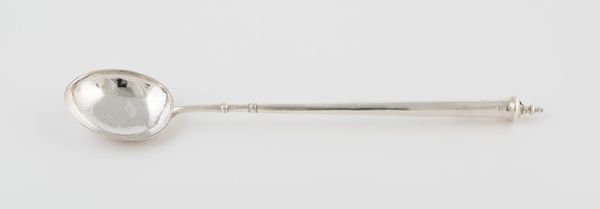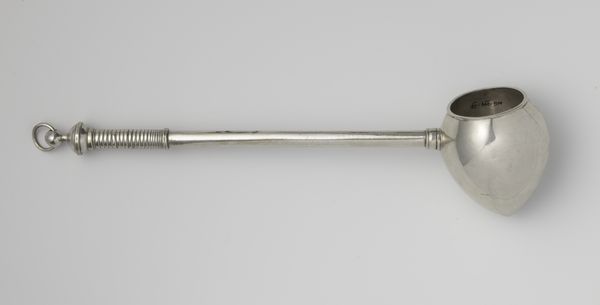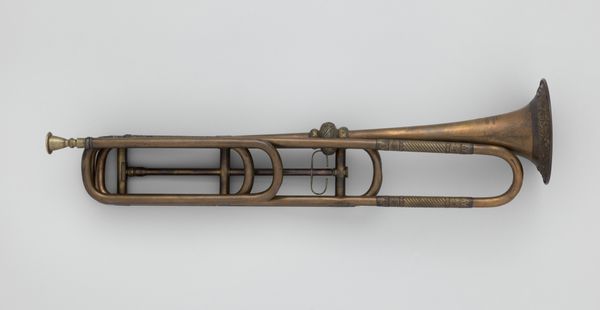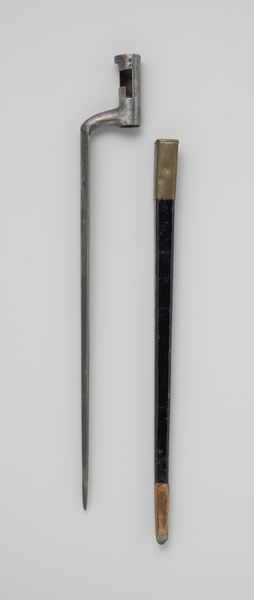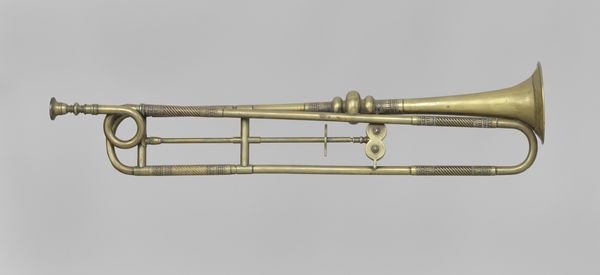
brass, metal
#
brass
#
metal
Dimensions: length 796 mm, width 130 mm, diameter 117 mm
Copyright: Rijks Museum: Open Domain
Editor: Here we have a natural trumpet, a signal trumpet made of brass dating from around 1800 to 1830. Its simple form and shining surface make it somehow majestic, despite its apparent utilitarian purpose. How does its shape influence our perception of it? Curator: Consider how the trumpet's form adheres to function. The cylindrical bore, the coiled tubing, the flared bell – each element contributes to its acoustic properties. Semiotically, the brass medium signifies resonance and projection. We must consider its very specific design – how do the various components enhance each other? Editor: So you’re saying the form isn’t just aesthetically pleasing, it's intrinsically linked to how the trumpet creates sound? It’s not just a shiny object? Curator: Precisely. The inherent properties of the material and construction dictate the experience. Notice how the artist or craftsman, by shaping this brass, directs not just its visual impact, but its sonic function, the form is its function. Do you see an intentional geometry present here, guiding your eye across it, dictating function and flow? Editor: Yes, I do, it is elegantly structured. It's amazing how form dictates its purpose! I hadn't thought about that before. Curator: Exactly! Considering the relationship between form and purpose allows one a new entry point when understanding art. It moves us beyond simply "looking at" and allows for "seeing" what we are engaging with.
Comments
No comments
Be the first to comment and join the conversation on the ultimate creative platform.

